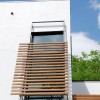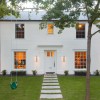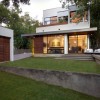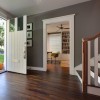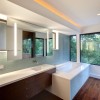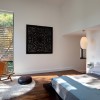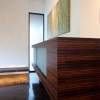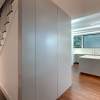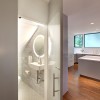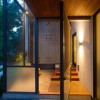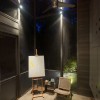House of the Month: Classic and Modern Architecture Collide in Austin
The Harris Boulevard House in Austin, Texas, provides a nice counterpoint to some of the more formulaic house types that dot the landscape. Its owners wished to create an amalgamation of their favorite architectural styles, which brought a certain rigor to the design process. During the couple's extensive travels in Asia, they developed a liking for Pacific Rim architecture, where the International Style is influenced by local building types. Additionally, the wife was born in Houston and then moved to Nebraska, so she has a fondness for the more classic homes of the Midwest.
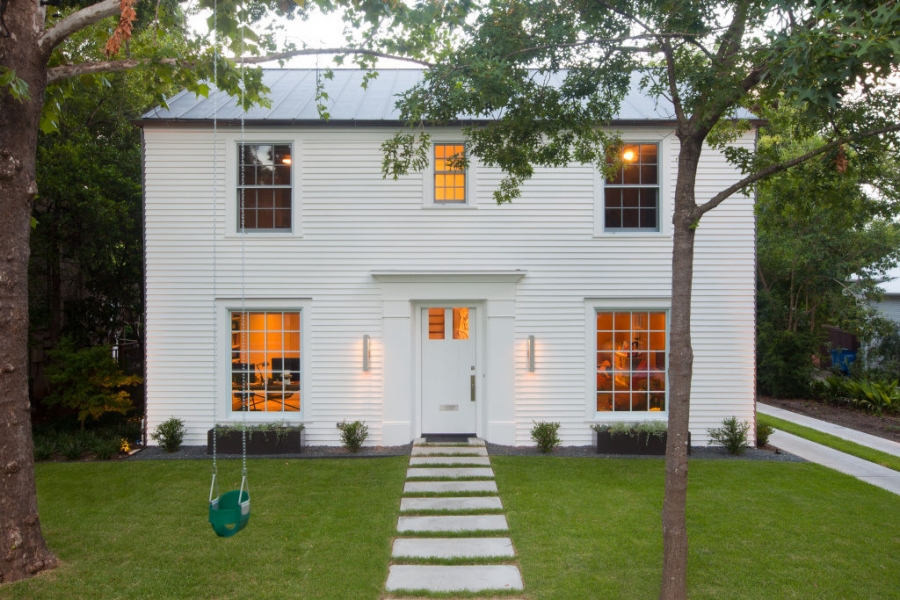 Credit: Hugh Jefferson Randolph Architects
Credit: Hugh Jefferson Randolph Architects
“Fortunately, these two architectural styles – classic and modern – really do have some parallels,” says Hugh Randolph, architect and owner of Hugh Jefferson Randolph Architects. “Both are based on clean lines and careful attention to proportion. They are both spare and simple.”
The couple purchased a 1,620 sq. ft. (150.5 m2) colonial home in Austin, knowing that it would need extensive renovation and hoping to incorporate into it a more modern addition.
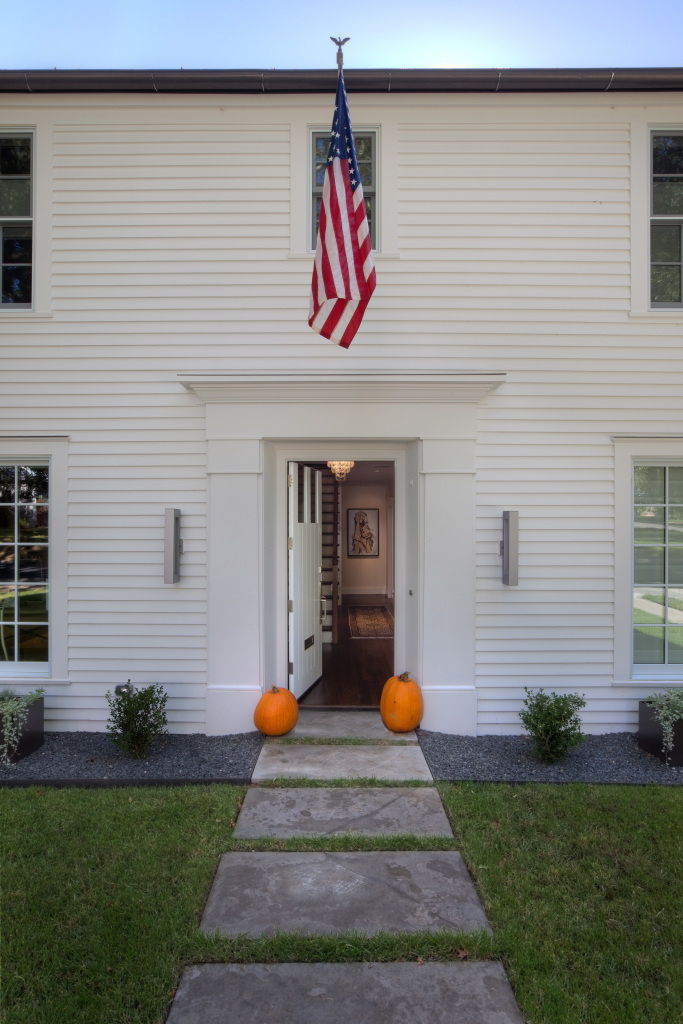
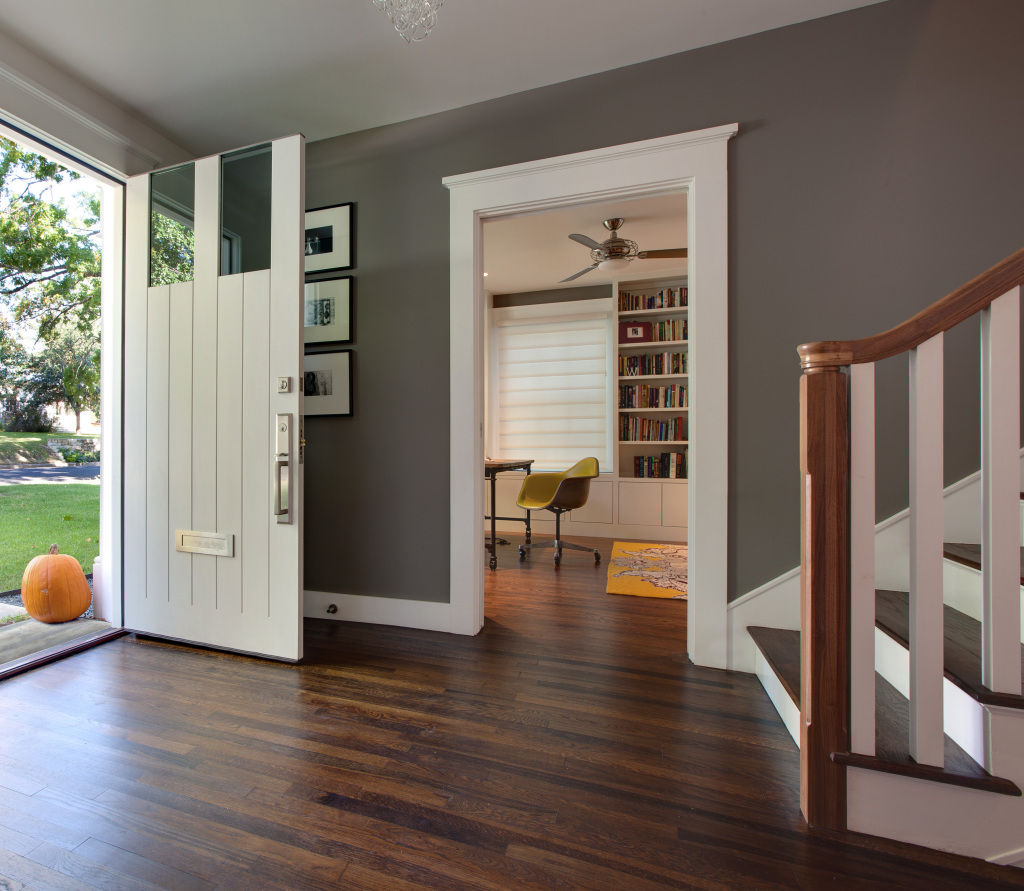
“I warned the clients that they wouldn’t save any money by keeping the existing structure, as opposed to tearing it down and totally rebuilding. But -- happily – the wife felt it was important to save the existing house. Not only is this kind of reuse sustainable, but it keeps a certain character to the building that is hard to recreate,“ says Randolph.
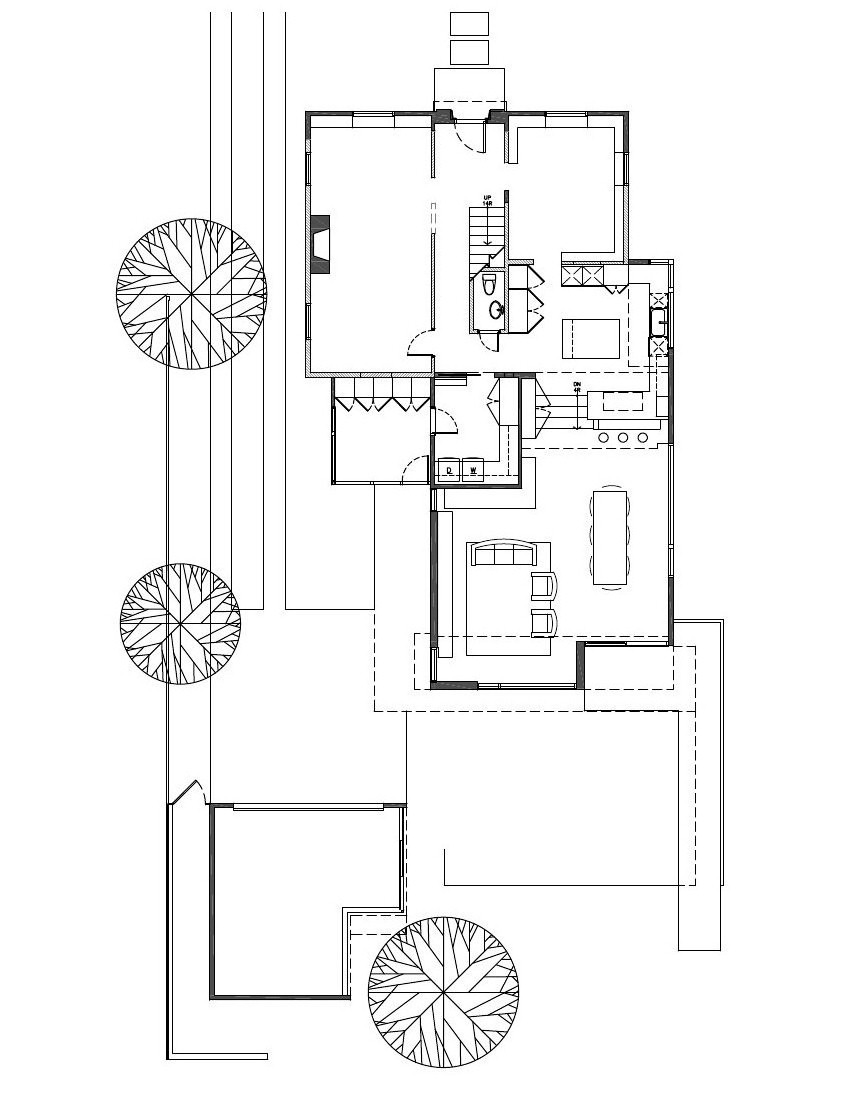 The kitchen was opened up by removing the back wall. This is where the new addition joins the original structure. In plan, the rectangular footprint of the addition echoes that of the original house; it rotates away from the colonial structure and extends toward the back of the property. Programmatically, “we added a family room, dining room, and utility room downstairs, and a new master suite upstairs," Randolph says. "It almost doubled the square footage of the house.”
The kitchen was opened up by removing the back wall. This is where the new addition joins the original structure. In plan, the rectangular footprint of the addition echoes that of the original house; it rotates away from the colonial structure and extends toward the back of the property. Programmatically, “we added a family room, dining room, and utility room downstairs, and a new master suite upstairs," Randolph says. "It almost doubled the square footage of the house.”
“Fortunately, these two architectural styles – classic and modern – really do have some parallels. Both are based on clean lines and careful attention to proportion. They are both spare and simple." Hugh Randolph, Hugh Jefferson Randolph Architects
The big change inside, according to Randolph, is the way the spaces interface. In designing the house, he considered carefully how spaces should flow, avoiding dead ends in circulation and sightlines. He also made sure each area received some natural light.
Carefully placed windows offer oblique views to the outdoors. For example, Randolph explains, “In the kitchen, where the wall bumps out, a quarter-window gives a glimpse of the street. And, when standing at the bottom of the staircase, one can look up, see the high ceiling of the master bedroom, and look beyond it into the tops of the trees.” This helps to offset the fact that, in putting an addition on the rear of the house, views from the front door through the interior were lost.
Randolph used the color white as a unifying element between the two styles. Planar white walls define spaces within the new addition. “For the interior walls, we used Level 5 sheetrock, which is very smooth,” says Randolph. “Details such as this become critical when you are dealing with these crisp, modern lines.” Similarly, cabinetry was shop finished by a local company. “The controlled environment allowed for a sleek, quality paint job," Randolph says. "You can’t really achieve the same results with on-site painting.”
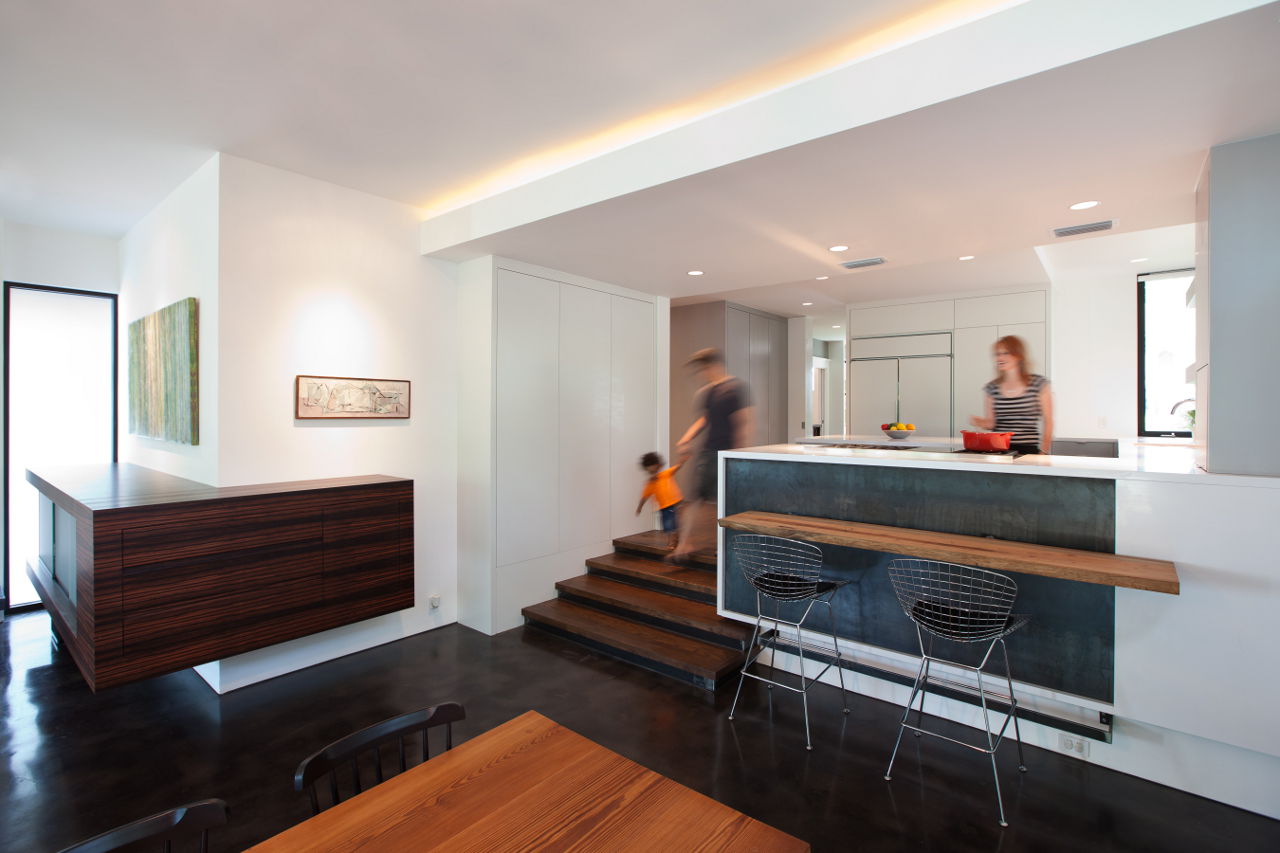

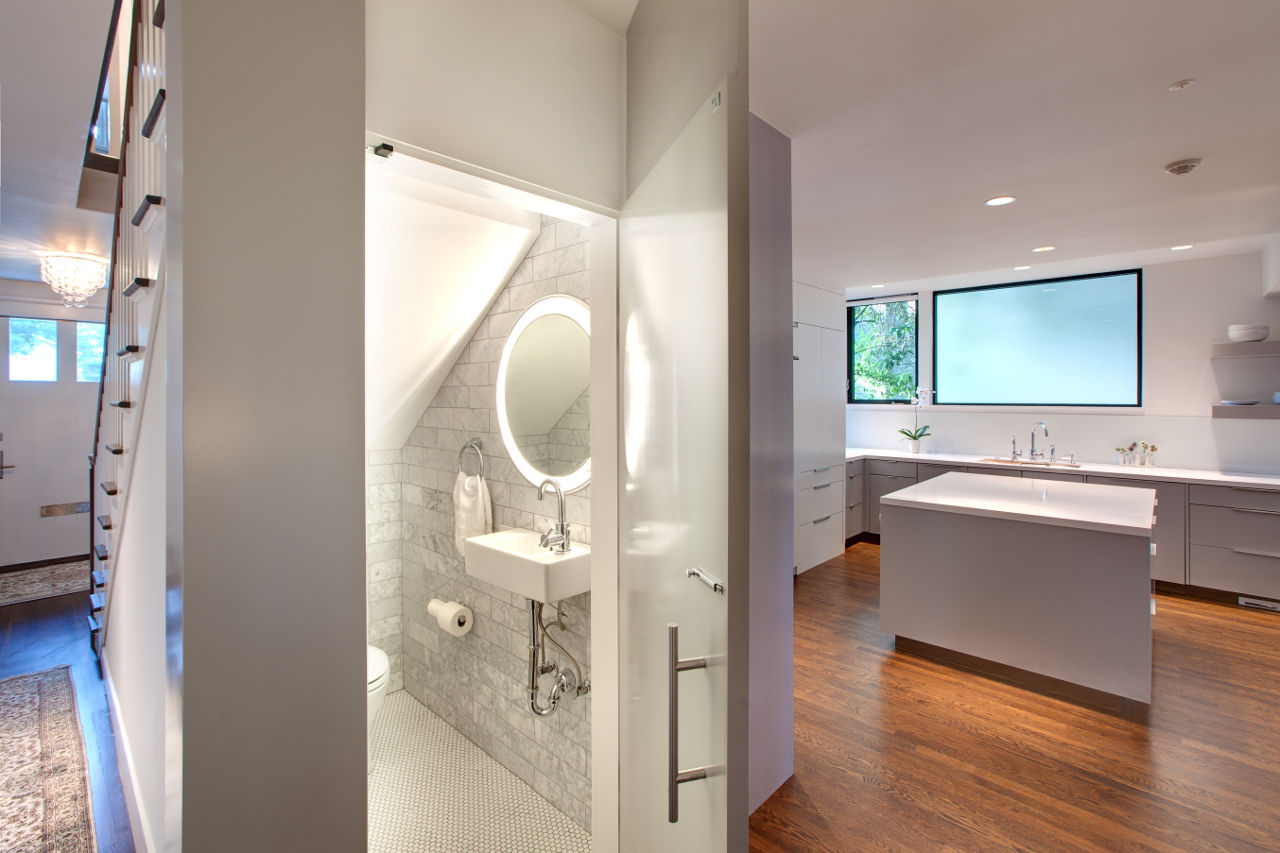

Elements of the front facade were simplified to keep its lines and detailing clean, and its white hue was also chosen with care. “We had considered a white with some warm undertones to it. But the bright white of the windows we selected led us to change to an arctic, cool white for the siding. This made it more striking, and more consistent with modernism. Also, the siding we chose is Artisan® from HardiPlank®, which has a more traditional thickness than some other HardiPlank® products. That thickness helps create shadows on the facade, which, again, is a level of detail that becomes important when dealing with the simple lines of modernism,” explains Randolph.
Bronze anodized storefront windows installed in the new addition provide expansive glazing along the back of the house, while divided light windows are in keeping with the styling along the front of the house. New metal roofing is a paint-grip galvanized product that is not overly shiny (“Having a lead color,” says Randolph). On the flat-roofed addition, the metal roofing is picked up as an accent on a back overhang.


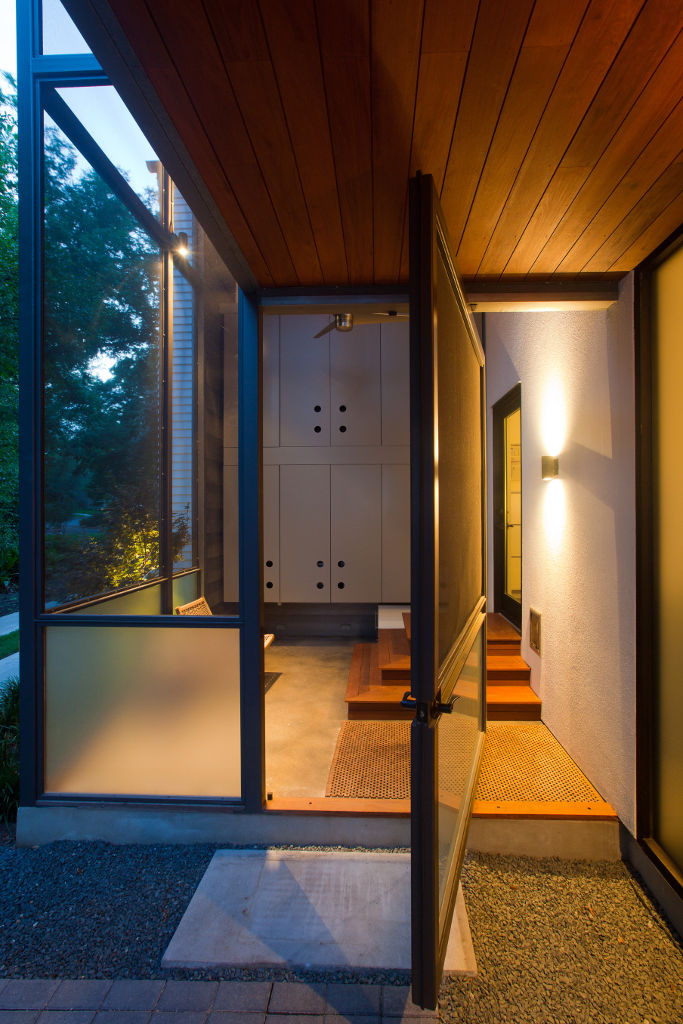

“Ipe wood, which is sustainably farmed, is used both outside and inside the house. It weathers without rotting,” says Randolph. Natural wood is used throughout the house, since it is a material that is common both in traditional Midwestern architecture and in the Pacific interpretation of modernism. Dark wood floors stretch through the original portion of the house and in the addition, where floors are of stained concrete and rectilinear wood furnishings carry the theme above ground. The dark color contrasts with the home’s white walls and ceilings. “It makes the elements stand out,” says Randolph.
As with the facade, detailing inside was kept minimal, because any traditional features are accentuated by their proximity to the modern addition. “Essentially, traditional elements look even more traditional against the modern, due to contrast,” Randolph says.
It’s worth noting that the house received five stars from the City of Austin’s green building program, which represents the highest level of award. The Austin Energy Green Building program was the first in the nation, and in many ways it set the standard for other (and now more familiar) green building programs. The Harris Boulevard House illustrates the fact that it is not only new builds that can achieve our nation’s highest standards of energy efficiency, but retrofit structures as well.

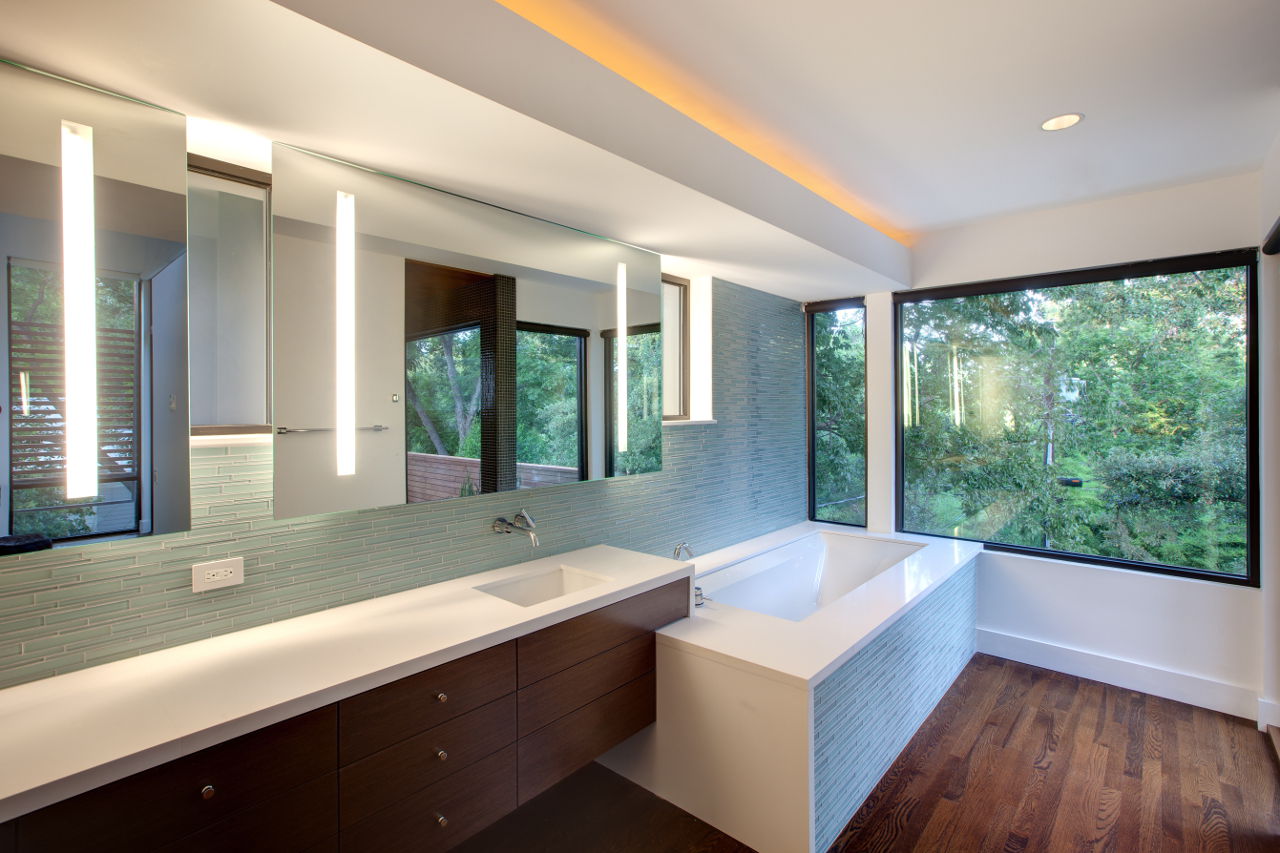

Kristin Dispenza
Kristin graduated from The Ohio State University in 1988 with a B.S. in architecture and a minor in English literature. Afterward, she moved to Seattle, Washington, and began to work as a freelance design journalist, having regular assignments with Seattle’s Daily Journal of Commerce.
After returning to Ohio in 1995, her freelance activities expanded to include writing for trade publications and websites, as well as other forms of electronic media. In 2011, Kristin became the managing editor for Buildipedia.com.
Kristin has been a features writer for Buildipedia.com since January 2010. Some of her articles include:

